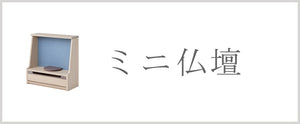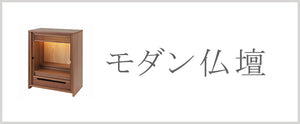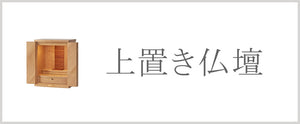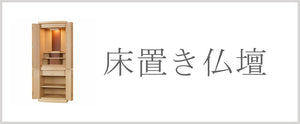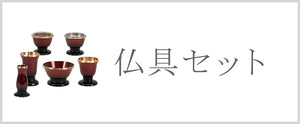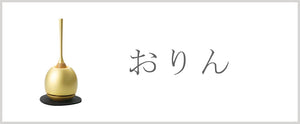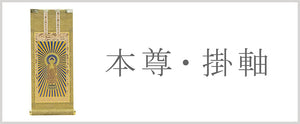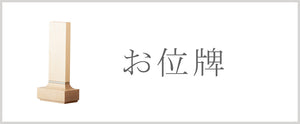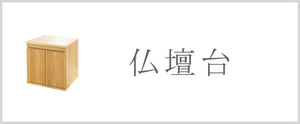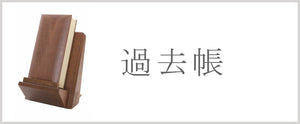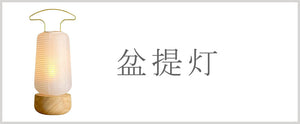Last updated:
Release date:
Recently, there has been an increase in cases where households have two Buddhist altars, due to marriages between only children and people living with their parents in two-generation homes.
Not only do you not have the space to store them, but some people may also be worried about whether it is even okay to store two Buddhist altars together.
In this article, we will introduce things to keep in mind when placing two Buddhist altars and how to combine them into one.
Can I have two Buddhist altars in one house?
First of all, what are some situations in which it is necessary to have two Buddhist altars in one house?
Three common examples are:
- The Buddhist altar is divided into two because the denominations are different.
- The husband and wife decided to take over the Buddhist altars of their respective families.
- Since I decided to live with my parents, I decided to take care of the Buddhist altar at home.
In this situation, it's natural to feel anxious, thinking, "If I put two of them under the same roof, they'll fight," or "I don't have anywhere to put them anyway."
In fact, some people say that it is not advisable to have multiple Buddhist altars in the home because it would make it difficult for your ancestors to relax.
Also, because Buddhist altars originally became popular as "small temples to be placed in the home," some people dislike having multiple altars, thinking that this will "split the direction of their faith."
However, recently, an increasing number of temples have come to accept that it is not a problem to have two Buddhist altars.
This is because, although it is generally considered undesirable, we should be flexible in our approach, taking into account the current situation of a declining birthrate and an aging population.
The way memorial services are conducted is also changing with the times.
However, if you already have a temple that you use, we recommend that you consult with them in advance.
Also, if you have relatives, it is important to discuss the matter thoroughly in advance, as opinions vary depending on the region, sect, and individual.
Points to note when placing two Buddhist altars
If you actually end up placing two Buddhist altars, you must pay particular attention to their placement .
As a general rule, try to avoid placing them in the same room.
This is a consideration for temples that are visited for memorial services, etc.
In addition, it is important not to share Buddhist altar items such as candle holders.
This is also a consideration to respect each Buddhist altar or sect.
Also, the appropriate Buddhist altar equipment may differ depending on the sect, so it may be advisable to keep them separate.
However, if you have to separate the rooms, some people may find themselves in a difficult position because they "don't have anywhere to put it in the first place" or "there is a room, but it's not the right environment for a Buddhist altar."

KASANE Buddhist Altar
In that case, you also have the option of purchasing new Buddhist altars for both.
Nowadays, there are many small, inexpensive Buddhist altars that are carefully made.
For example, a "mini Buddhist altar" that can be placed on top of furniture is small, ranging in height from 11 to 18 (approximately 33 cm to 54 cm), and can be placed in any living environment compared to a traditional pedestal Buddhist altar.

Open Buddhist Altar ORINASU
Another new method of memorial service is to choose an "open Buddhist altar" where you can display memorable personal belongings.
Its compact size combines the functions of a photo frame and display stand, so it cannot hold multiple memorial tablets or Buddhist altar accessories, but it should easily match with the interior of your home.
Replacing your altar like this is an effective solution for managing multiple altars day to day.
Another option is to combine the Buddhist altars into one.
Although it is not a recommended method, an increasing number of people are choosing to enshrine the ancestors of both families in one Buddhist altar.
This is also not a recommended method, so you should proceed carefully by following the steps below.
-
More than a month ago
As with having two Buddhist altars, be sure to discuss this thoroughly with your family and relatives beforehand.
-
1 month ago
We will consult with the temple and get their agreement that we would like to have one Buddhist altar.
After that, decide on the specific arrangements for the closing ceremony for the Buddhist altar that you are disposing of.
In particular, if the two families are of different sects, be sure to inform the temple of this.
-
One week before the memorial service
The memorial tablets and death registers are brought from the altars to be disposed of and placed in one altar for memorial services.
Of course, even if you are consolidating your altars into one, you can also take this as a good opportunity to purchase a new one.
In that case, please have a thorough discussion with your relatives about the remaining Buddhist altar, carefully hold a closing ceremony with the temple, and dispose of it in accordance with proper etiquette.
Making stress-free choices while considering the ideal family structure
In today's world, where the nature of families and perceptions of religion are changing, ideas about memorial services and how Buddhist altars are maintained are also changing to suit the situation.
One issue that has arisen along with these changes is whether to have two Buddhist altars in one household or combine them all together.
The important thing is to think about what kind of memorial service you would like to provide in the future and respond carefully.
Be sure to discuss this thoroughly with your relatives and temples in advance and make a decision that is not too difficult for you.
Nagomi Kobo TOP page is here >


